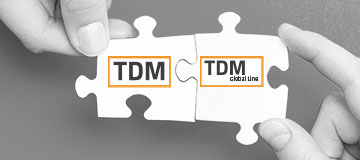Mr. Nellinger, you manage the “CAM integration” department. What does your team offer customers in terms of support?
We develop our interfaces in a uniform manner. This allows us to ensure that the interfaces for the various CAM systems, which are installed at the customer’s facility, are compatible with each other. We “industrialize” new interfaces in close cooperation with reference customers; thus, they are optimized in real-world conditions in the customer environment.
What role does the CAM connection play as part of Tool Lifecycle Management?
Which tools have to be used at which time on which machine depends primarily on the NC program. Our CAM interfaces transfer the tool data, including the possible programming points and the feed data, to the CAM system. After programming, the CAM system sends the tool lists back to TDM. Based on these, the tool planning is carried out for the machines in TDM and presetting orders are generated for new tools.
For which CAM systems are interfaces already available and which are coming soon?
Currently, among others, we have interfaces for the CAM systems ALPHACAM , CAMWorks, CATIA V5, EDGECAM, ESPRIT, Eureka, GibbsCAM/VirtualGibbs, hyperMILL®, Mastercam, NX, Pro/E or its successor Creo Parametric, SolidCAM, Tebis, TopSolid’Cam 7 and VERICUT. Currently, we are working on additional interfaces for CATIA/DELMIA V6 and DMG. This allows us to support the most common CAM and simulation systems.
Which TDM modules should customers use to be able to use the interfaces?
The TDM Base Module, in combination with the TDM classification and the respective interface module for the customer’s CAM system, is sufficient for easy transfer based on parameters. In the expansion stage, the TDM 3D-Solid Converter, including TDM 3D-Solid Editor, is useful because it makes it easier to transfer accurate collision geometries. The TDM Tool Contour Generator may be sufficient for rotationally symmetric tools and certain CAM systems.
How is this relevant to the “digital factory”?
We are trying to digitally simulate the complete production process in advance, allowing us to secure it. Parallel to running production, the following production orders are to be prepared with process reliability. An important factor here is the collision control in an extremely realistic simulation environment. Along with machines and clamping situations, this also includes tool geometries that are as accurate as possible. These become more important as the number of workpieces to be produced decreases and the complexity of the machine and the programming effort increase.
Does the customer receive the data from the tool manufacturers?
The toolmanufacturers supply the required 3D data, but unfortunately, not always in CAM-compatible quality. The graphics are also only available for the individual items (e.g. holders and milling tools); but for a realistic simulation, the user requires complete tool assenbly data from TDM.
Will there be a standard one day that makes interfaces unnecessary?
Interfaces will also be required in the future; only the format and the content of the data have to be further standardized to simplify the data exchange. Currently, a standard for the tool data depiction and the tool data exchange is defined in ISO 13399. TDM Systems collaborates in this standard and we will use our software for reading and writing, too.




